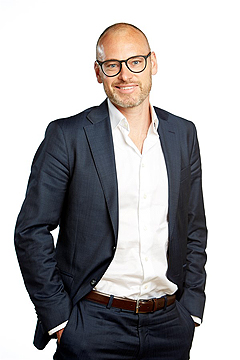News - VolvoVolvo to recharge Australian sales in 2018Rising star: Volvo’s XC60 SUV (left) will have its first full year of sales in 2018 and it will be joined by the compact XC40 that launches soon. New focus on sustainable growth rather than outright volume to help Volvo next year4 Jan 2018 VOLVO Car Australia (VCA) will focus on its core SUV model lines in 2018 in a bid to turn around a sales decline that saw the Swedish brand’s new-vehicle registrations drop by more than 20 per cent last year. Over the past 12 months, every Volvo model except the S90 large sedan and related V90 Cross Country wagon have dipped by double-digit percentage points, including the still-fresh XC90 seven-seat SUV (-26.9 per cent), the V40 hatchback (-19.6 per cent) and the XC60 mid-size SUV that only recently entered its second generation (-11.4 per cent). Volvo recorded a total of 4681 sales in 2017 – a 20.4 per cent downturn compared to the previous year – despite a strong December in which sales grew by 10.2 per cent over the equivalent month in 2016. The slowing of sales has been replicated across the premium segment, with a number of other marques, including Audi (-9.3 per cent) and BMW (-15.7 per cent) experiencing negative growth. VCA acting managing director Stephen Connor told GoAuto at the Volvo Ocean Race held in Melbourne over the New Year that the company was expecting a 33 per cent sales increase in 2018 on the back of its key SUV models. “That’s driven off the back of XC60, XC90 and XC40 which is coming through, which is a brand-new product and a brand-new segment,” Mr Connor said. “We’re not trying to be megalomaniacs around other models. We are focusing on our SUVs which will form 83 per cent of our model mix.” Currently, Volvo’s SUV models – the XC60, V90 Cross Country and XC90 – make up 64 per cent of its overall sales, but the arrival this year of the recently revealed XC40 crossover, as well as a full year of sales for its popular XC60, is expected to drive the growth and increase the share of SUV sales. “It is all about sustainable growth and we want to grow naturally,” Mr Connor added. “We want to grow in a nice progressive way. What we don’t want to do is flood the market with product, which just doesn’t help anybody. “We’re very happy with the volume increase and we think that’s more than achievable.” Volvo Cars senior vice-president of marketing, sales and service Bjorn Annwall said the company globally was also shifting focus to sustainable growth and shareholder returns, and that this was also the case for the Australian arm. “This is typically the discussion you get into very quickly of how much growth, and we always talk volume,” Mr Annwall told GoAuto while visiting Melbourne for the yacht race. “I think, for us, it’s important that we – and I think the whole industry – start to become a little less focused on volume and more on market earnings from a shareholder perspective, but also in terms of what type of mobility you provide for consumers. It’s not only about volumes, we want sustainable growth. “I think that’s a big driver in Australia.”  Left: Volvo Cars senior vice president of marketing, sales and service Bjorn Annwall Left: Volvo Cars senior vice president of marketing, sales and service Bjorn AnnwallVolvo previously set a global target of 800,000 annual sales shortly after it was bought by Zhejiang Geely Holding Group in 2010, but Mr Annwall said achieving that figure was less important than ensuring sustainable growth. “Then we said 800,000 as a target for 2020. We still have that as a target,” he said. “That’s one of many targets. If that comes half a year earlier or half a year later, no big deal. It’s a general direction of growth that we wanted to pinpoint. Then, in that growth, it’s more important that it’s sustainable and we do it in the right way than the exact number of cars.” Despite its relatively small size compared with other markets, Mr Annwall said Australia was an important market for Volvo globally. “I think it’s a market with very strong competition and it’s also a market where, obviously, some more premium competitors are doing a better job than us in taking market share,” he said. “Just by rough numbers of it, it seems like there’s an opportunity for us to grow given how well Volvo has developed based on the premium competition. I think we should be able to see a similar story here.” Mr Connor said the company had its work cut out for it in Australia, but added that he was confident in Volvo’s growth potential as a smaller player in the market. “We’ve got a long way to go to, not just to catch up but to be the Volvo that we should be in Australia,” he said. “We’re certainly not competing at the level that we want to, but we play a very important part to Asia-Pacific who we report to, and also to head offices in central and we do things in a nice, controlled manner. “We’ve been fortunate enough to work with central to make sure that our volumes this year are realistic so we don’t want to be the biggest and the fastest-growing brand in Australia. “We want to be the nice controlled brand that grows at the right rate, and then, obviously, gives a nice return to our shareholders as well. Yes, absolutely we can do more in Australia. You will see that next year (2018) and the year after, but it will be a nice controlled growth. “Why I said 30 per cent growth, it sounds a lot, but it’s not really when you take out the XC60 and XC40. Once you take those out then the growth is fairly much static. We’re riding on the crest of the wave, if that makes sense.” Mr Connor said he expected interest in the XC60 mid-size SUV would increase this year, despite the company pulling out of the rental market. “Our volume opportunity, we will go from selling 1800 vehicles … to about 2500 vehicles for XC60. That’s natural growth, that’s not a false growth. Also, if you take out last year we did about 700 rentals. So this is an increase over and above the 700 rentals as well because we’re not going back into that segment in that kind of volume.” Mr Connor said VCA did not need rental company sales, but would not abandon the segment altogether. “We don’t need to do that volume. We will be in rental, but we won’t be to that level,” he said. “Last year (2016) was driven off the back of stock and demand, but we now think that this year we’ve focused our energy on making sure we’ve got the right stock in the right place and we’ve now driven a demand-type scenario so we have got enough demand and we have just about the right level of supply.” Mr Annwall predicted that Volvo’s global sales would have grown in 2017 “seven, eight per cent” beyond the 534,000 it recorded in 2016, but the figures will not be released for a couple of weeks. “It would be maybe 570,000, that order of magnitude. We will have solid growth also for next year (2018) based on the new XC60, based on the XC40. Then having a full year of XC60 in most of the world. Then, we are launching two new cars next year as well. It will be a year of growth.” The two new cars are expected to be the next-generation S60 and V60 mid-size sedan and wagon twins, but their Australian future is uncertain (see separate story).  Read more3rd of January 2018  Next Volvo S60/V60 under a cloud for AusFuture of mid-size S60 and V60 twins uncertain in Australia12th of October 2017  Driven: Volvo XC60 checks inLatest XC60 set to remain Volvo’s most popular model despite imminent XC4021st of September 2017  First look: Volvo lifts lid on XC40Volvo takes aim at premium crossover sales stars with new XC40 |
Click to shareVolvo articlesResearch Volvo Motor industry news |
















Facebook Twitter Instagram